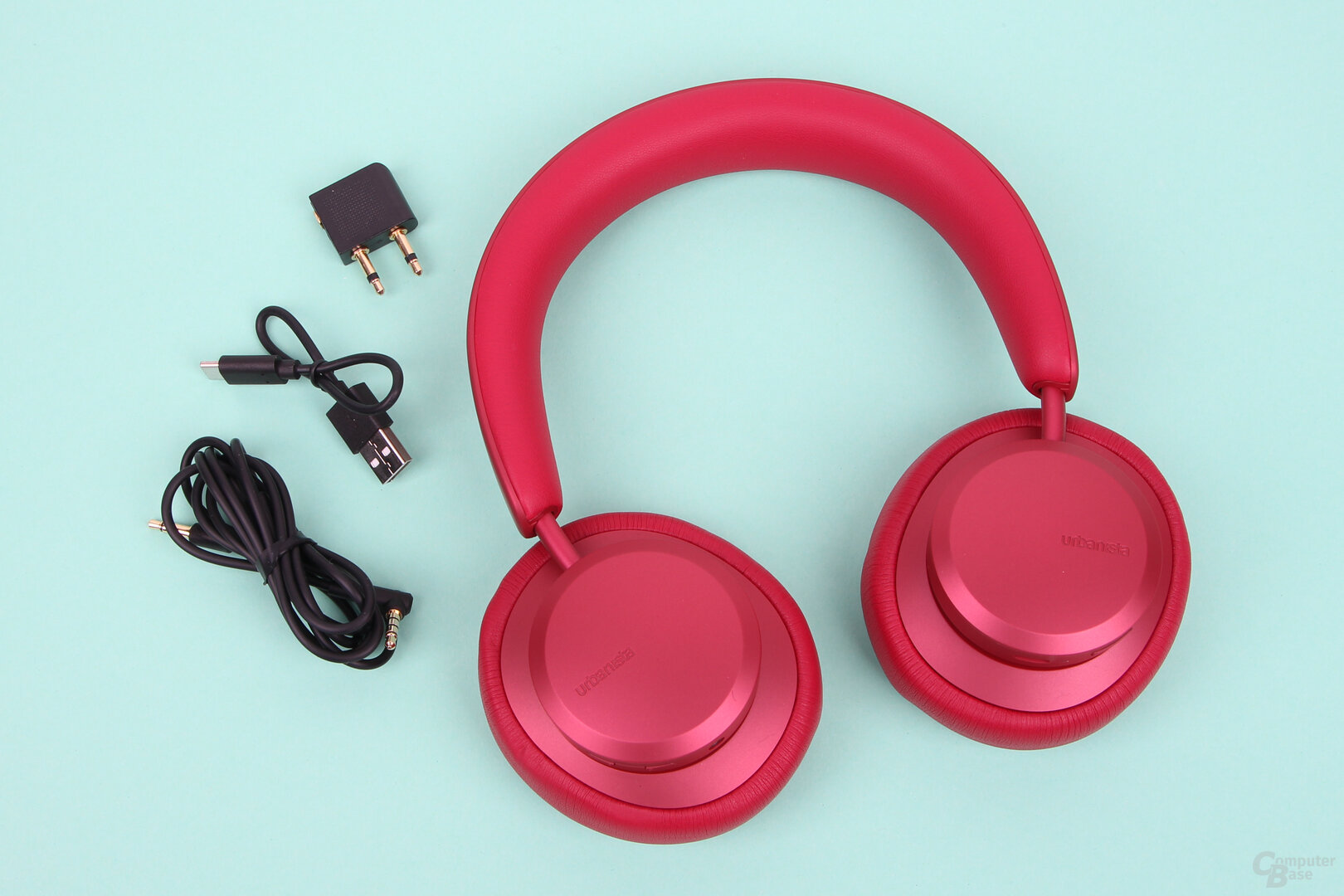The Urbanista Miami is a wireless ANC over-ear headphone with wear detection for 150 euros, which above all creates a good mood with a lush bass reproduction. As a travel companion, the well-made headphones with ANC are convincing when played via Bluetooth, cable or completely without music.
Table of contents
- 1 ANC headphones for over 40 hours of bass boom
- The technology of Miami
- Wear detection and control via buttons
- No app for adjustments and updates
- Workmanship and wearing comfort
- 2 sound, ANC, transparency, telephony, latency and conclusion
- sound of Urbanista Miami
- ANC filters low frequencies
- Good transparency mode
- Quiet telephony
- Latency in comparison
- Conclusion
The Miami are wireless over-ear headphones from the Swedish company Company Urbanista, who not only wants to score points with a long battery life, but also with a transparency mode in everyday life in addition to active noise suppression.
The headphones are available in Pearl White, Midnight Black, Ruby Red and Teal Green for a recommended retail price of 149 euros. In addition to the Miami, the scope of delivery includes a travel bag, an AUX cable with 1-button remote control and microphone, an airplane adapter and a USB-C to USB-C charging cable.
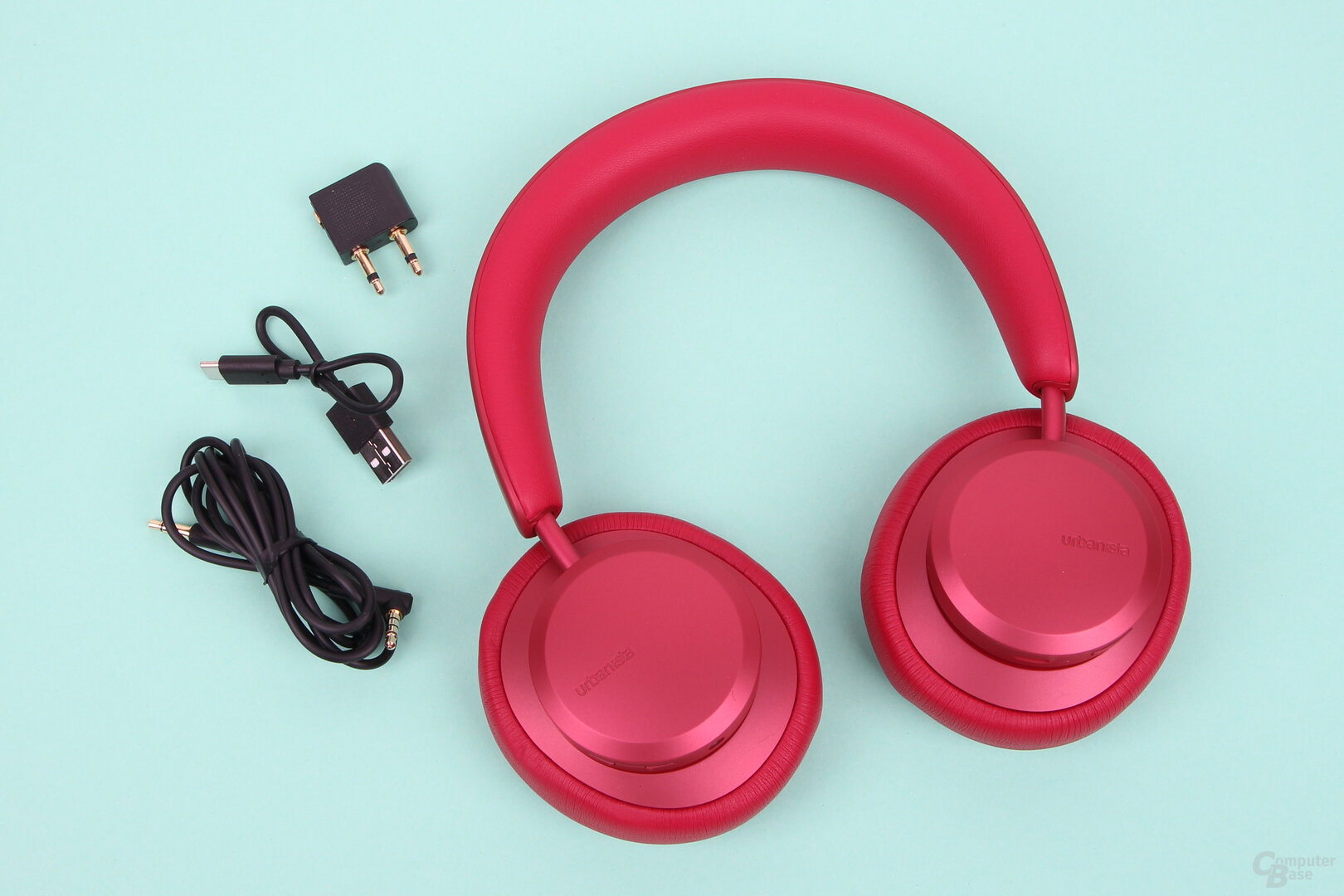 Urbanista Miami: scope of delivery
Urbanista Miami: scope of delivery  Urbanista Miami in a travel case
Urbanista Miami in a travel case 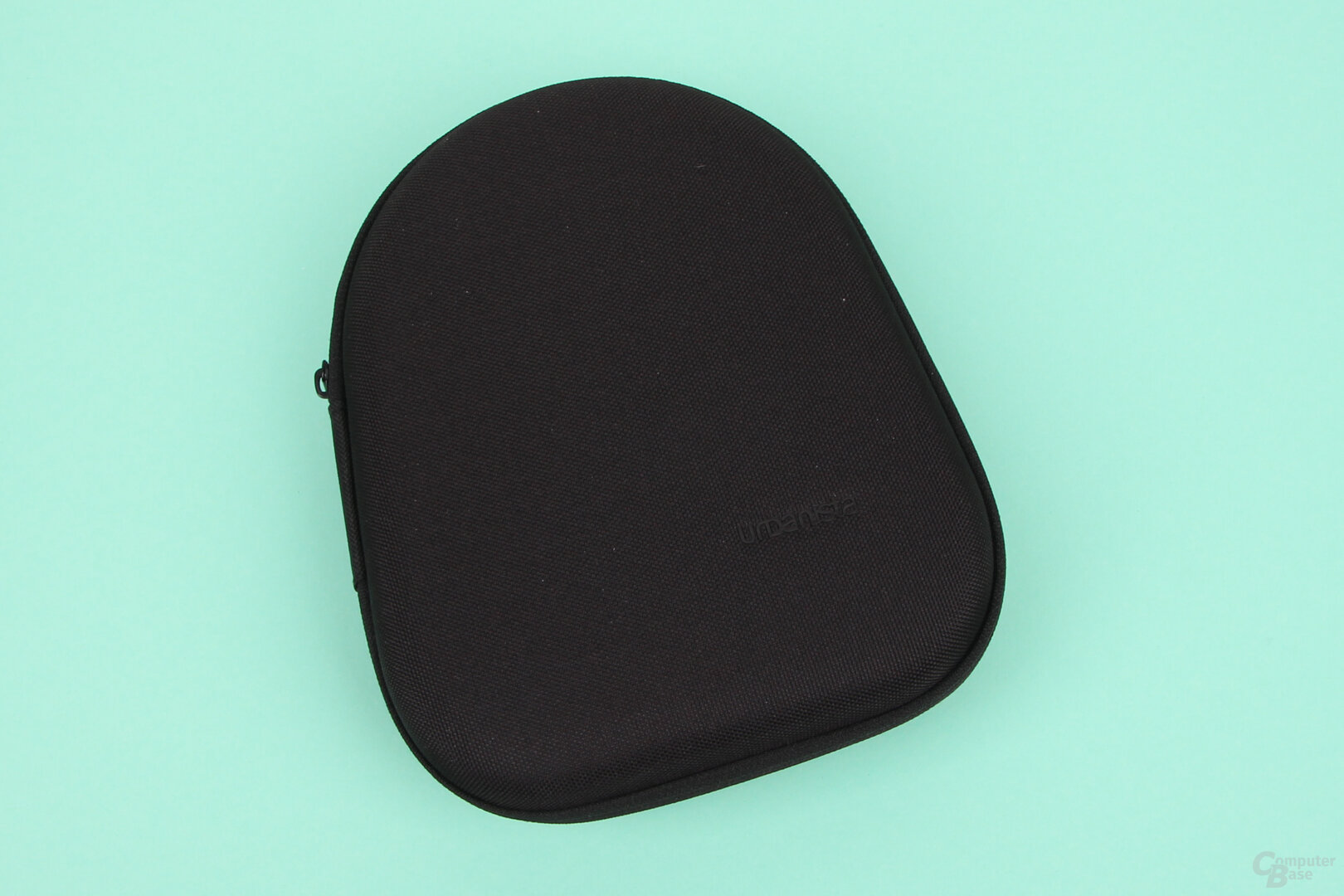 Urbanista Miami: travel case
Urbanista Miami: travel case The technology of Miami
Bluetooth 5.0, AAC and 40 mm driver
The Urbanista Miami relies on Bluetooth 5.0 for wireless connection to smartphones or tablets. In addition to the mandatory audio codec SBC, the Miami also supports AAC, but not aptX or an HD codec. The lack of aptX is primarily due to the fact that the BES2300YP from Bestechnic is used as the audio SoC and not a Qualcomm platform from the aptX makers. The Miami also does not support “Bluetooth Multi-Connect”, so only one device can be connected to the headphones at the same time and not two in order to quickly change the playback source.
The dynamic 40 mm drivers with an impedance of 32 ohms cover a frequency range from 20 Hz to 20 kHz. The maximum sound pressure level is 107 dB at 1 kHz.
-
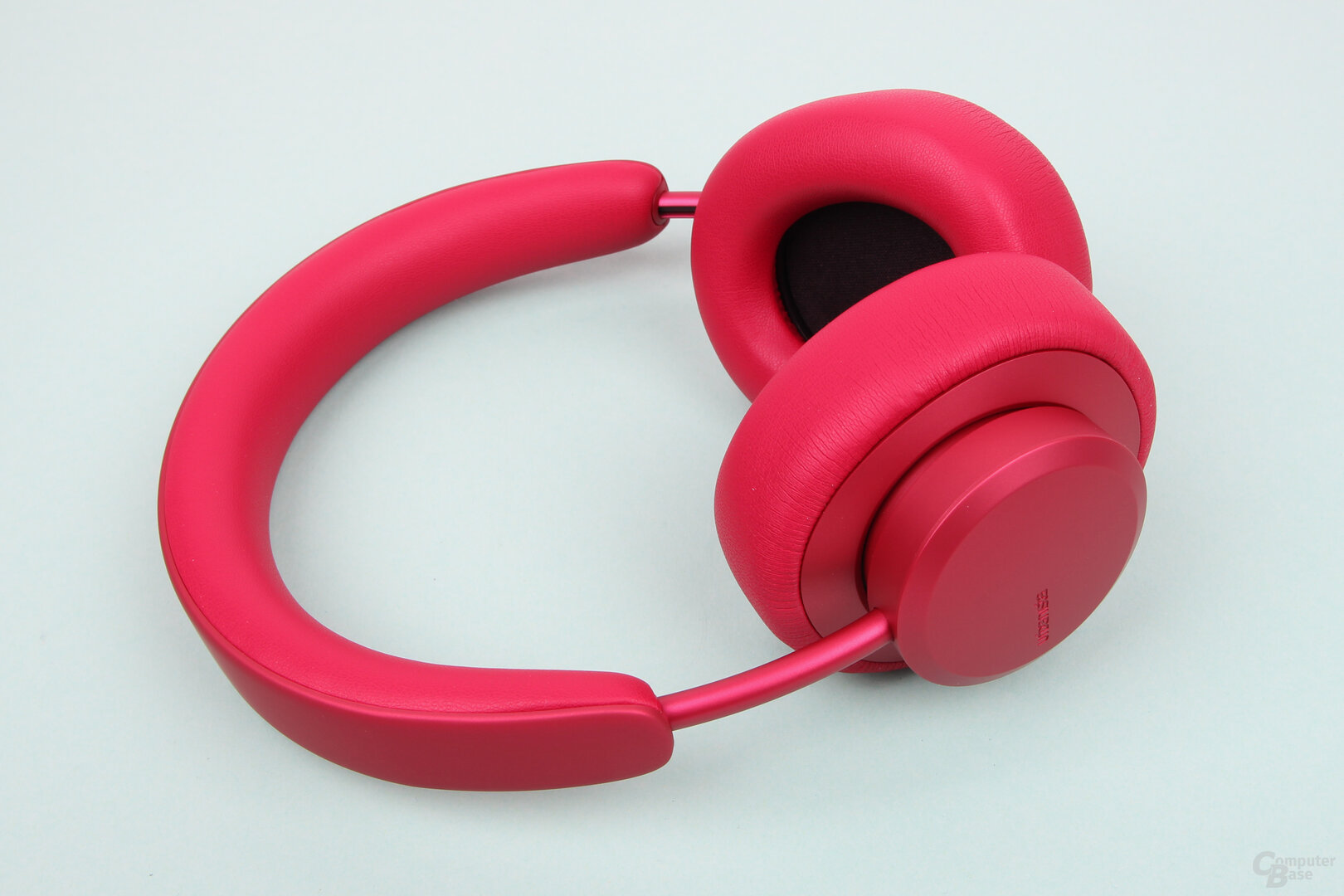 Urbanista Miami in the test
Urbanista Miami in the test
Image 1 of 3
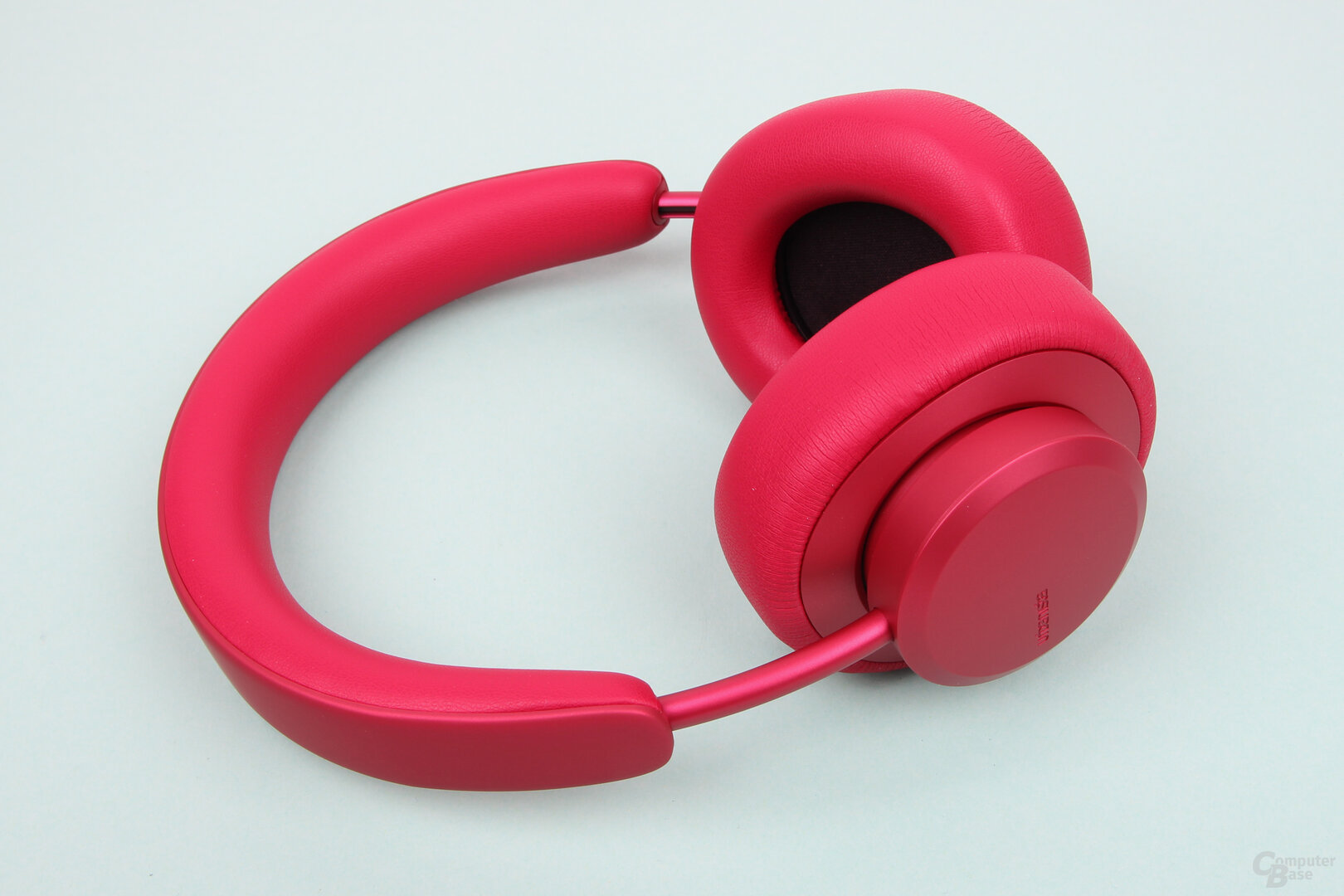 Urbanista Miami in the test
Urbanista Miami in the test 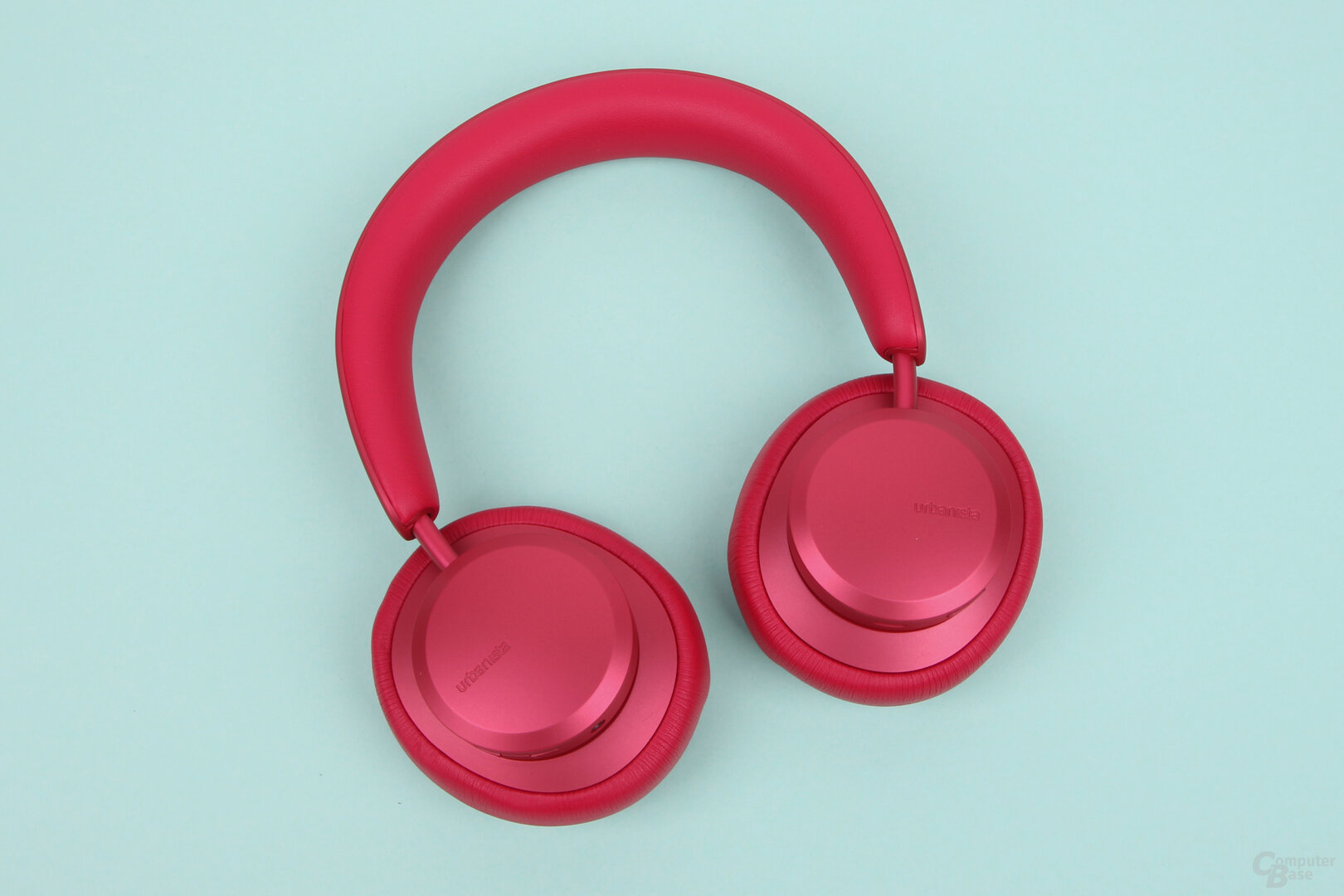 Urbanista Miami under test
Urbanista Miami under test 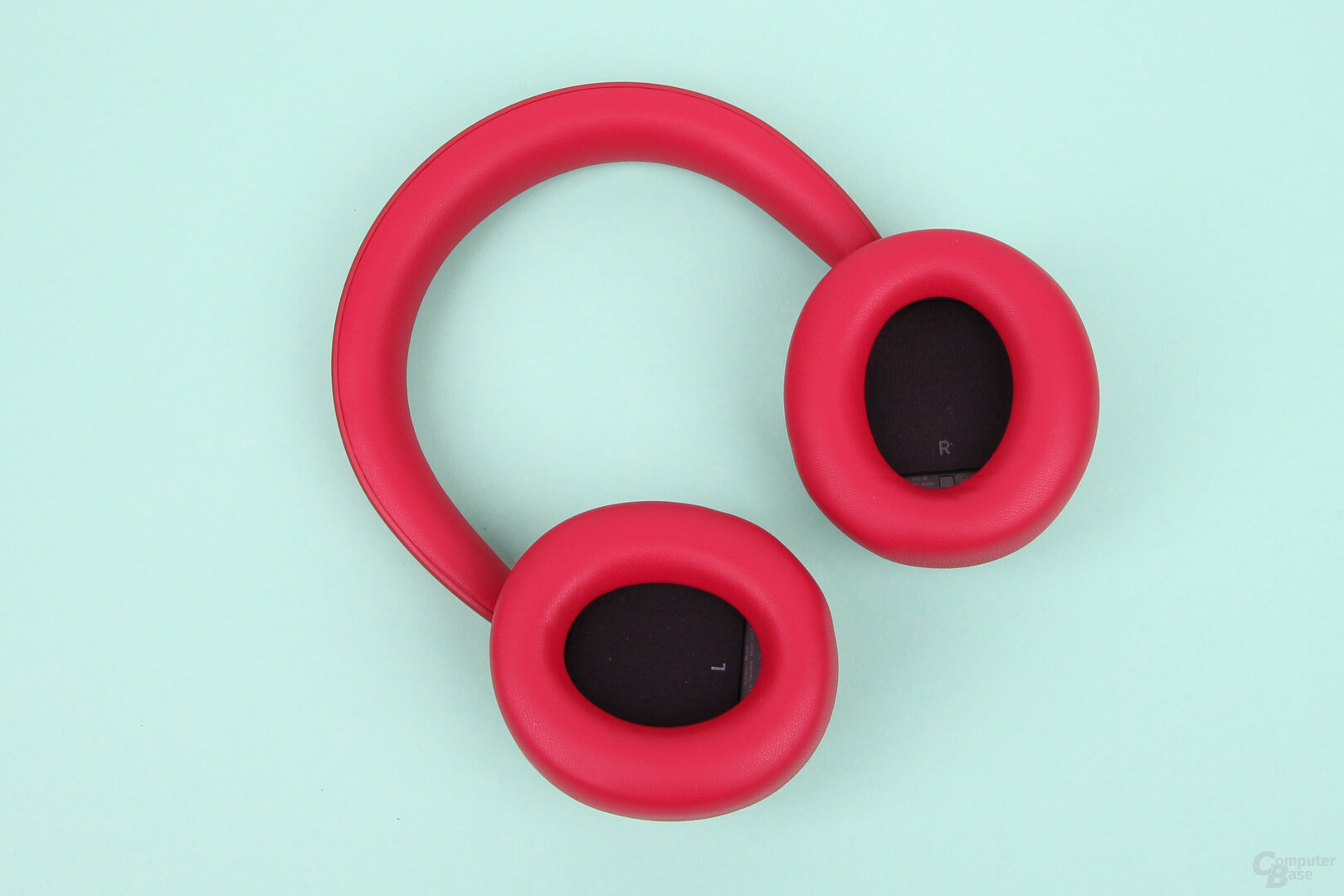 Urbanista Miami in the test
Urbanista Miami in the test Music via bluetooth or cable
Instead of Bluetooth and a wireless connection, the user can use wired operation if necessary – active or passive. This means that the ANC and the transparency mode can also be used when using the cable, even if Bluetooth remains switched off. All you have to do is press the ANC button on the left auricle. The announcement, which mode is currently switched on, is then missing. Theoretically, the headphones can also be worn to only filter ambient noise – without any music playback via cable or Bluetooth. A total of four microphones are installed for the ANC, two on each auricle, one of which is directed outwards and one inwards.
The frequency response of the microphones is between 300 Hz and 10 kHz. The weight of the headphones is 310 g, which is slightly higher than models like the Razer Opus (test) with 265 g or the Sony WH-1000XM3 (test) and the Sony WH-1000XM4 (test) with around 250 g each.
 Urbanista Miami tested
Urbanista Miami tested Up to 40 hours with ANC
Urbanista specifies the battery life of the headphones as up to 50 hours without ANC and up to 40 hours with activated noise cancellation – the capacity of the internal battery is 750 mAh. In the test, 42 hours of music could be played with one battery charge at medium volume and activated ANC. Without ANC, slightly more than the promised running time was achieved with 52 hours. Especially when using active noise suppression, the Urbanista Miami do not have to hide from the competition with their running time.
The headphones can only be charged via the USB-C port on the left auricle. The discharged battery is completely filled after around 90 minutes. Thanks to a quick charge function, around 2:30 hours of playback are available again after 5 minutes. While charging, music can be played via cable, but not via Bluetooth.
ANC and transparency mode
In contrast to the ANC mode, which is supposed to largely eliminate outside noise, the transparency mode called “Ambient Sound Mode” can also be used to deliberately pass this on to the wearer's ears via the headphones' microphones in order to be able to perceive the surroundings despite the over-ear design . However, it is not possible to adjust the intensity of both modes.
Carrying recognition and control via keys
It is controlled using buttons on both ear cups. On the left auricle, next to the USB-C port, there is only one button that is used to switch through the ANC and transparency mode or to deactivate both functions. Pressing a button at a time jumps one mode further. On the other hand, there are three buttons on the right auricle. The middle control button is used to switch the headphones on and off and to start and pause playback. In addition, calls can be accepted and ended via this. If the control button is pressed twice, the smartphone's voice assistant is called up. The control button is enclosed by two buttons for controlling the volume, which are also used to switch through the tracks if they are pressed for two seconds. All important functions are accessible via buttons on the Miami.
In practice, however, the three buttons on the right auricle cannot be operated optimally because they are too small and their delimitation must first be felt each time. So you keep thinking briefly whether you have hit the right spot before you press. It takes a little longer to get used to, because you usually hit the right key, even if you don't make sure again.
The Urbanista Miami also have a sensor in the right auricle, which is used to detect when the headphones are removed from the ears. Then the music playback will be paused automatically. As soon as the headphones are put on again, playback starts again automatically without having to press pause or play. Urbanista goes to work very briskly with the auto-play and auto-pause functions, which is why a slight readjustment of the headphones can interrupt the music playback.
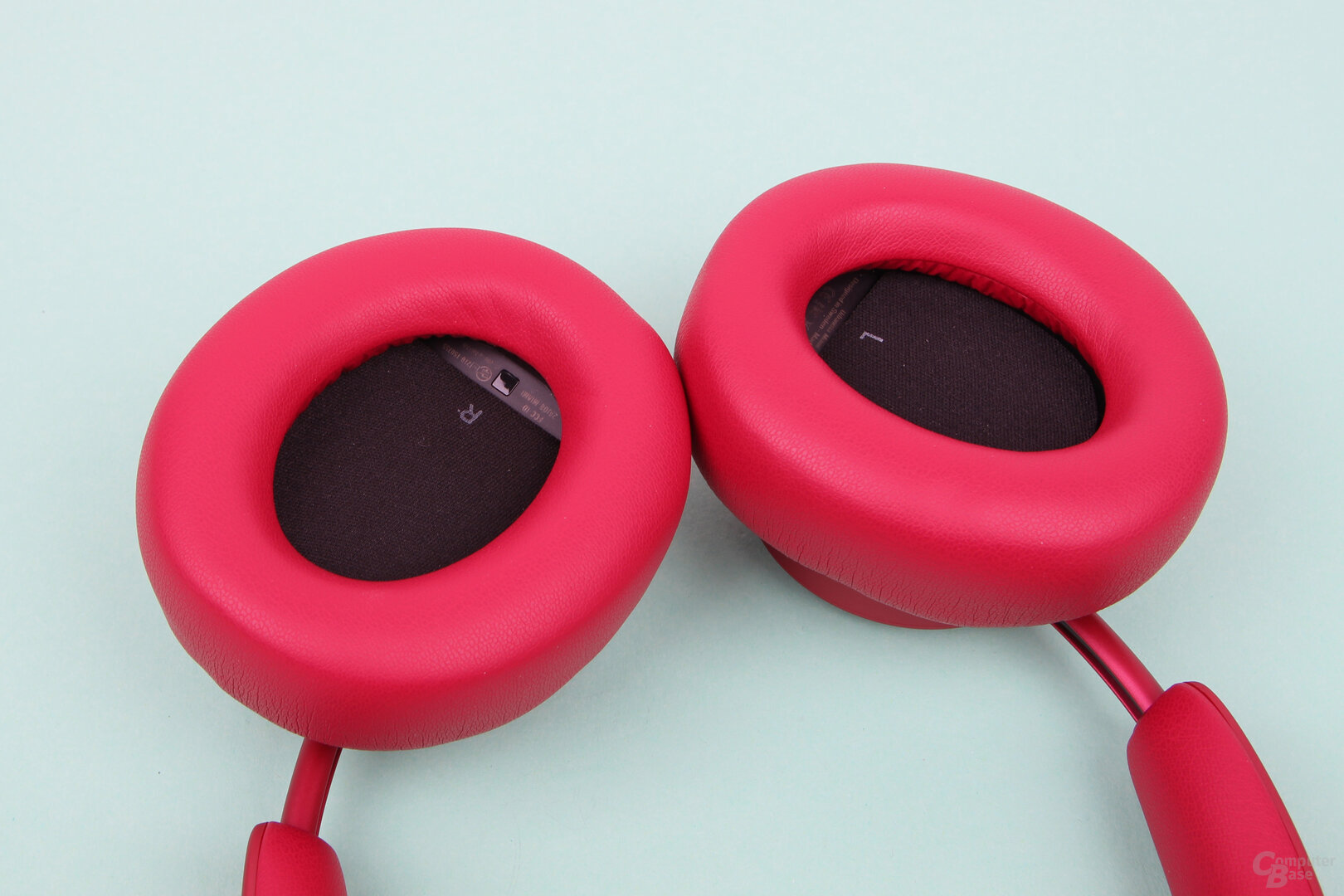 Urbanista Miami in the test
Urbanista Miami in the test About 30 minutes before the battery is empty, the headphones play an announcement about the low battery level and warn the wearer.
Cable remote control with microphone
The remote control integrated into the cable allows you to control music playback, but not calls. It also includes a microphone that is used in cable operation. A single press of the button starts and pauses the music playback, a double click switches to the next track, a triple press jumps back. If the button is held down, however, the voice assistant is called.
No app for adjustments and updates
Urbanista Miami does not offer app support. Not only do they lack an equalizer that can be used to save profiles directly on the headphones and thus can be used independently of the end device, but also no adjustments to the control, the ANC or the transparency mode and no firmware updates are possible. The Urbanista Miami therefore always remains up to date with the purchase.
Processing and wearing comfort
The workmanship of the Urbanista Miami is very good. Urbanista uses aluminum inside and on the telescopic mechanism of the headband, otherwise plastic is used over a large area. The cables are visible but protected in the pipe. The telescopic mechanism for adjusting the headband does not have a grid, but offers enough grip so that it does not slip at any time. If the headphones are to be placed in the hard-shell travel case on the go, the position must be adjusted to the smallest size each time and readjusted when putting on.
-
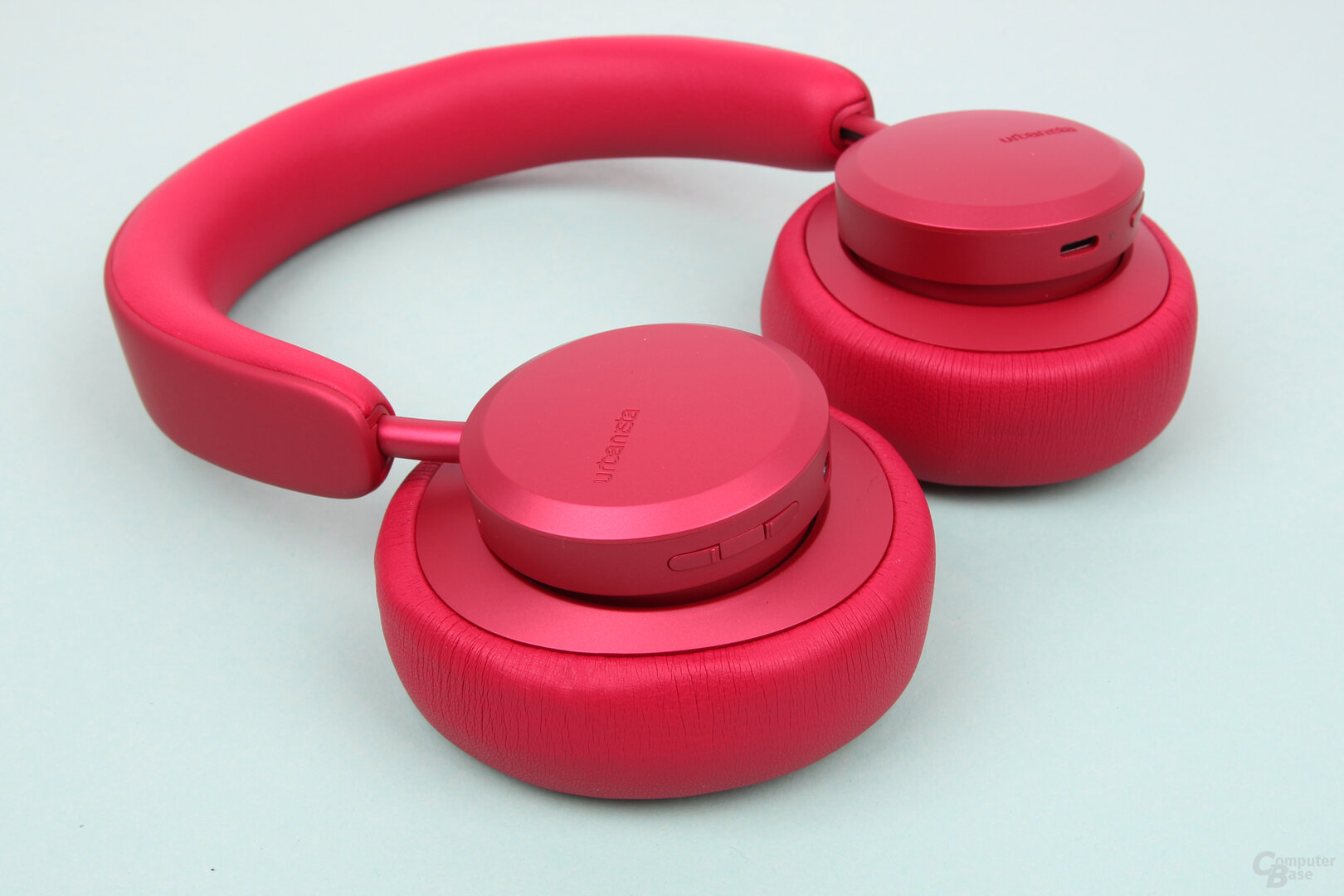 Urbanista Miami under test
Urbanista Miami under test
Image 1 of 2
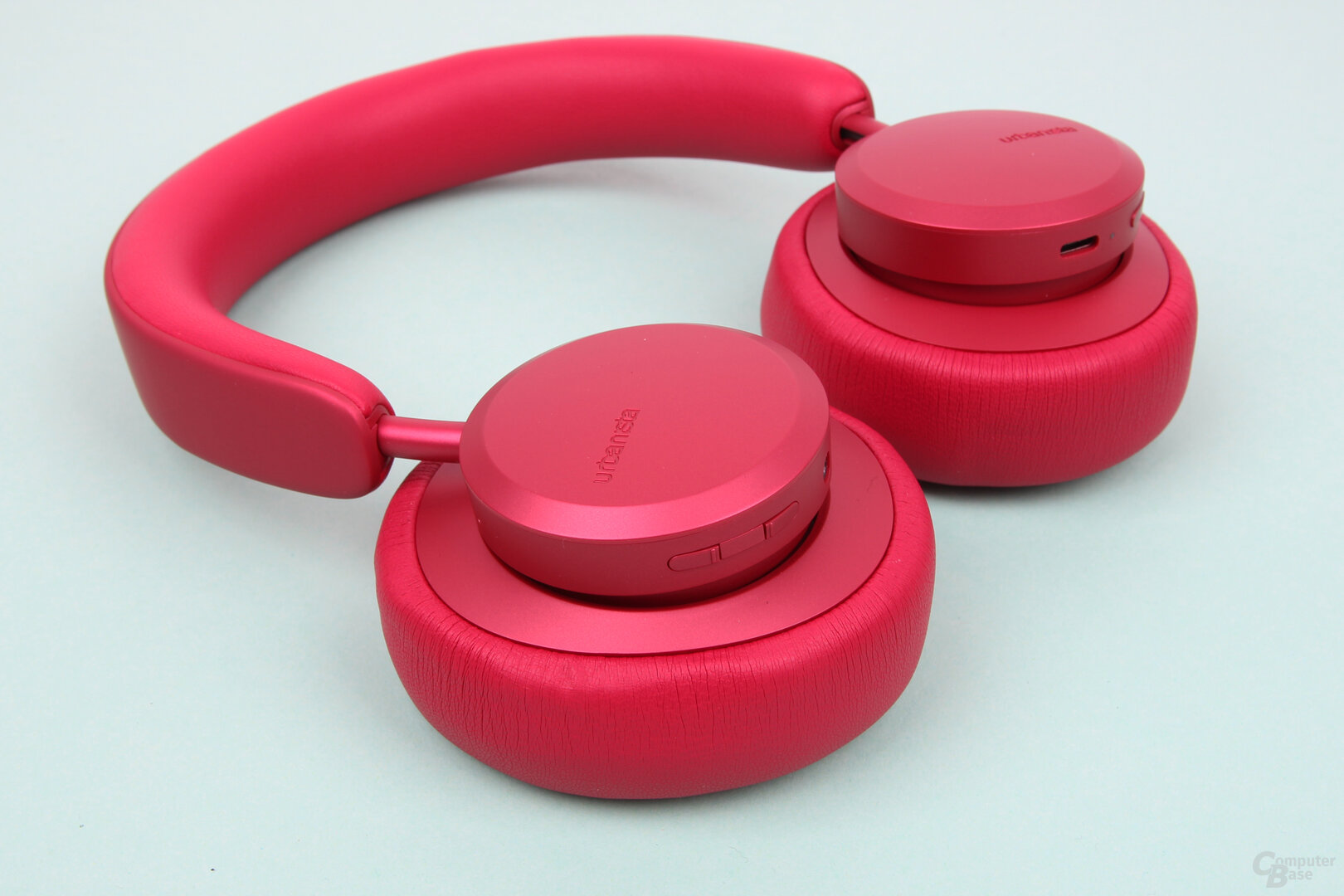 Urbanista Miami in the test
Urbanista Miami in the test  Urbanista Miami under test
Urbanista Miami under test The headphones are designed to be very tight, so they exert a comparatively strong pressure on the head. The ear cushions are pleasantly soft and thick, but the Miami can't hide the fact that it creates a feeling of pressure when worn for a long time – it also makes it easy to sprint to the bus or train. In addition, the space for the ears under the wide ear pads for over-ear headphones is comparatively narrow with around 4.0 × 5.5 cm. It is difficult for large ears to fit under them, and even normal eavesdroppers come across the almost 2 cm thick ear pads. The ear cushions are clipped in and can be exchanged with a little dexterity.
-
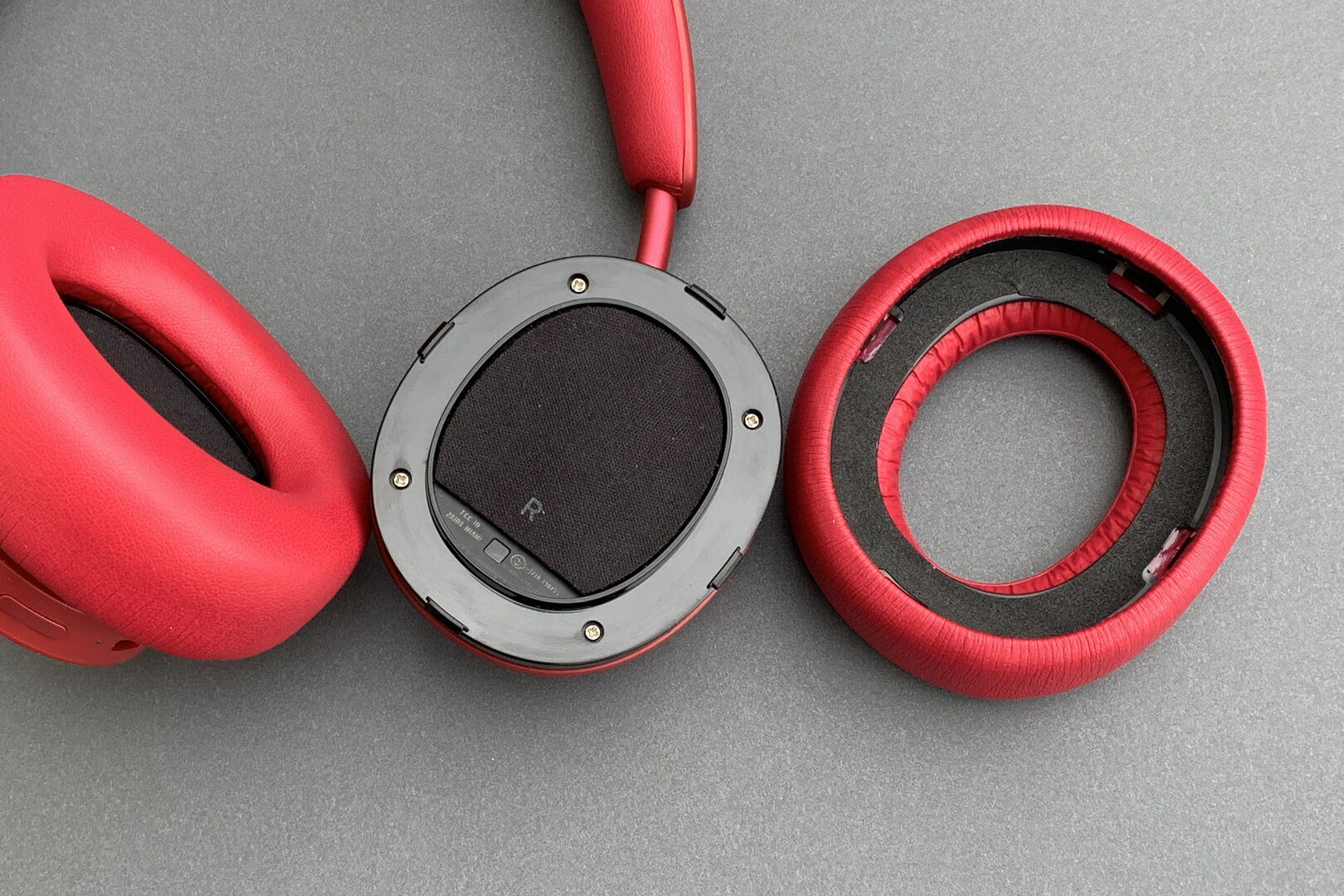 Urbanista Miami: Replacing the ear pads
Urbanista Miami: Replacing the ear pads
Image 1 of 2
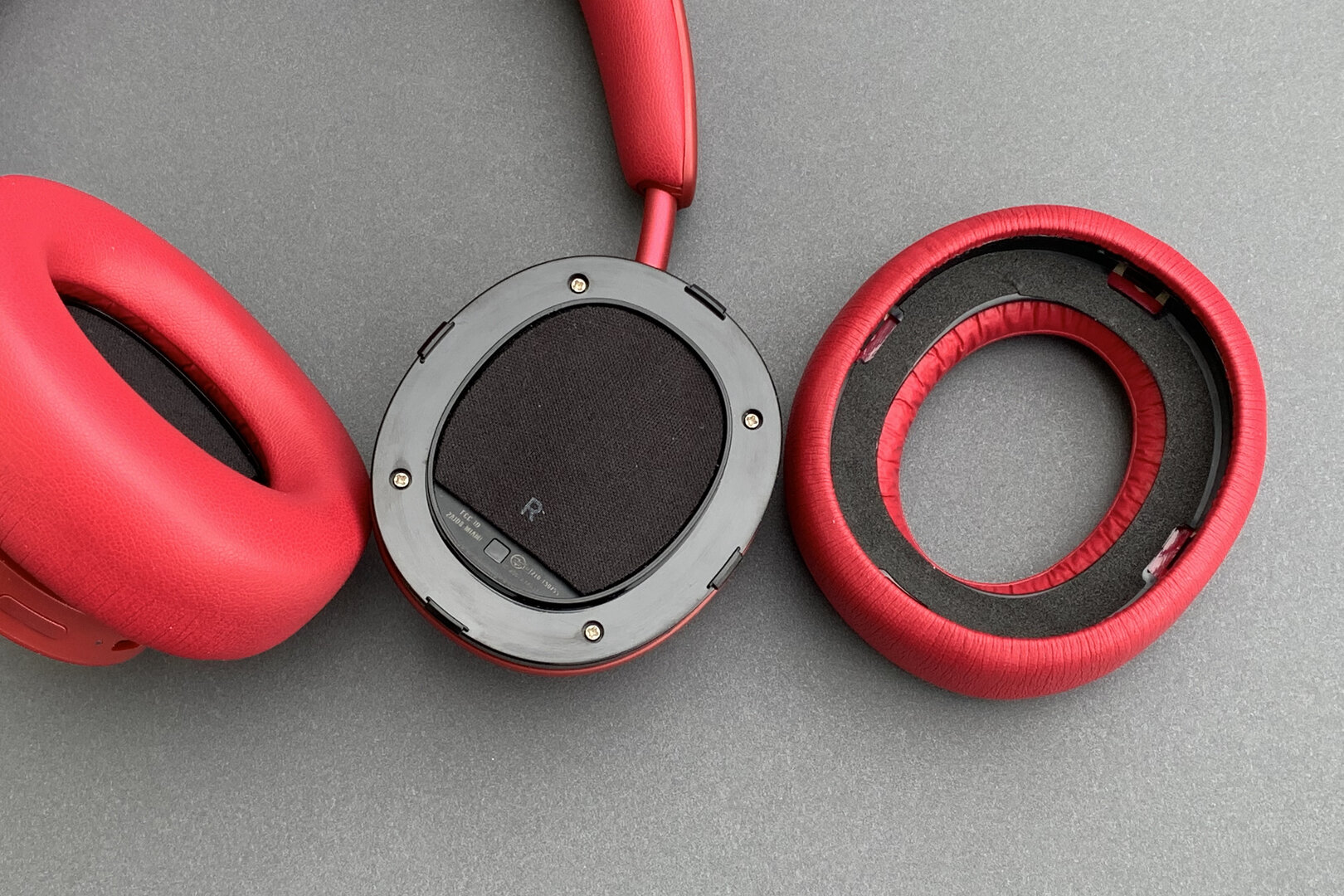 Urbanista Miami: replacing the ear pads
Urbanista Miami: replacing the ear pads 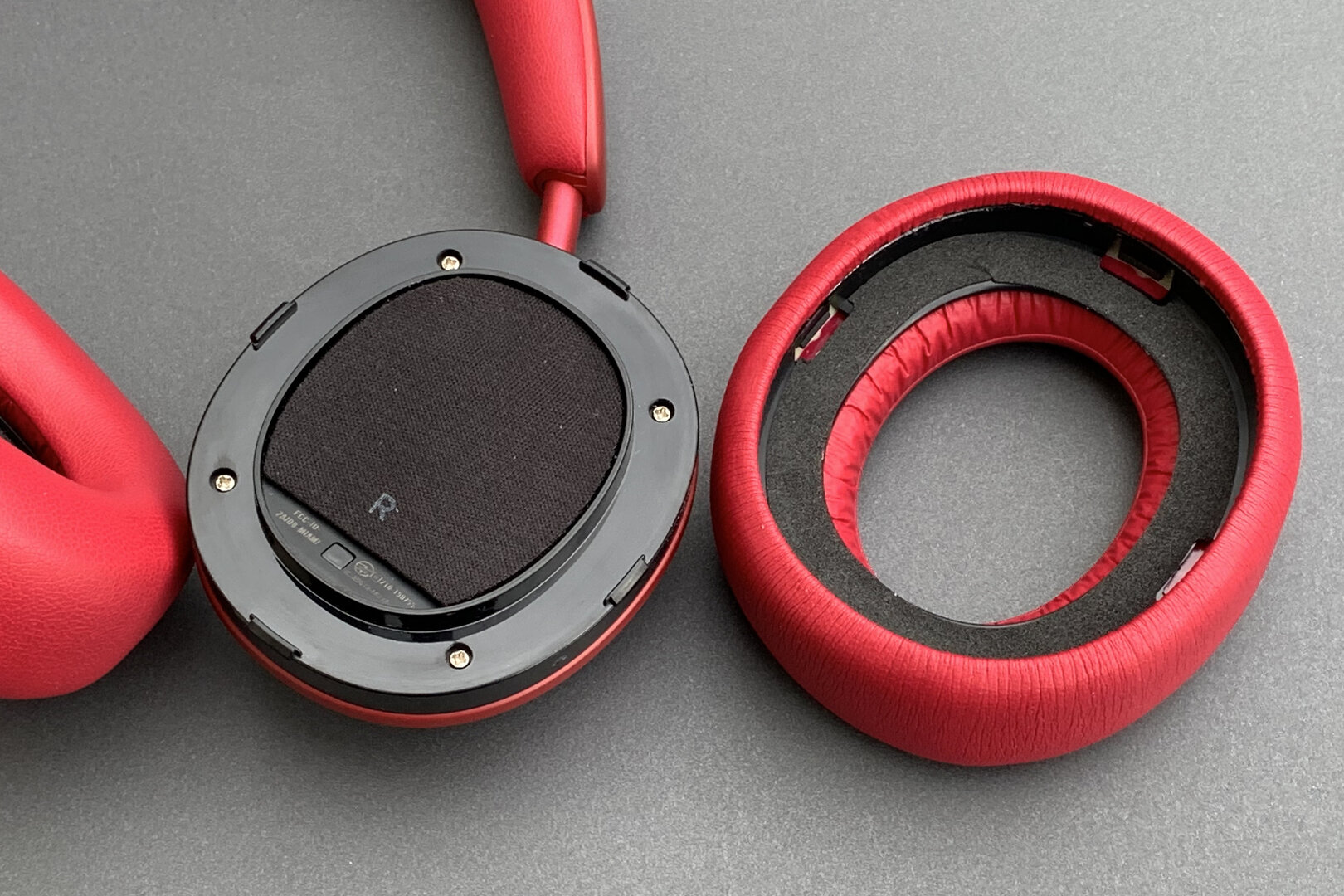 Urbanista Miami: Replacement of the ear pads
Urbanista Miami: Replacement of the ear pads The ear cups can be rotated 90 degrees backwards so that they can be placed on the upper body in a protected position when the Miami is worn around the neck. They can only be rotated a few degrees forwards. Unlike the Apple AirPods Max, they cannot be tilted at the point where the headband is attached to the ear cups. It is not possible to fold the headphones.
On the next page: sound, ANC, transparency, telephony, latency and conclusion
